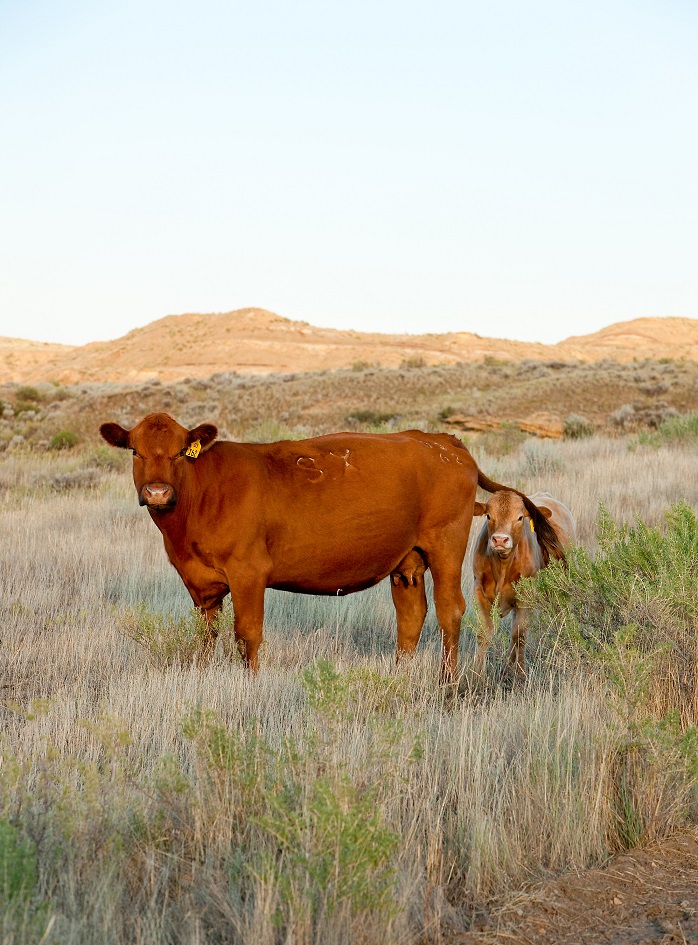
In Nebraska, spring calving is the prevailing cow-calf production system and non-pregnant females are often sold in October and November as cull cows. Photo Courtesy of USDA NRCS.
This article is a summary of the 2016 Beef Report “Economics of Rebreeding Non-pregnant Females”. Aline G. Da Silva, Jacqueline A. Musgrave, Don C. Adams, John Nollette, Andy Applegarth and Rick Funston were collaborators on this research study and report. The report is summarized by Aaron Berger, Nebraska Extension Beef Educator.
In Nebraska, spring calving is the prevailing cow-calf production system and non-pregnant (“open”) females are often sold in October and November as cull cows. The late fall also tends to be when seasonal cull cow prices are lowest for the year. The spring historically is a more favorable market for cull cows as well as pregnant fall calving cows. The University of Nebraska-Lincoln conducted a budget simulation analysis for a 5 year period to compare the economics of selling non-pregnant spring-calving cows immediately after being diagnosed in the fall or rebreeding these cows to be sold as pregnant fall calving cows in the spring.
Spring-born, crossbred females at the Gudmundsen Sandhills Laboratory (GSL) and the West Central Research and Extension Center (WCREC) identified as being non-pregnant after the spring breeding season were utilized over a two-year-period for this analysis. The females from GSL were approximately 80%, 20 to 32 months of age, while the females from the WCREC were all approximately 20 months of age. Estrus synchronization with a 60 day natural service breeding season was utilized at GSL for rebreeding. Pregnancy diagnosis utilizing ultrasound occurred 30 days after the end of the breeding season. At the WCREC, heifers were estrus synchronized and a timed artificial insemination protocol used for rebreeding after which heifers were placed with bulls. Ultrasound was used to determine pregnancy 135 days after artificial insemination.
Based on the results of these two scenarios, a partial budget analysis was performed. The economics of selling non-pregnant females right after pregnancy testing in October/November or keeping these females and rebreeding them to be sold as pregnant fall-calving cows in April was evaluated. Historical market price data from the USDA Agricultural Marketing Service from 2010 to 2015 was used in the analysis for feed and for cow or heifer values.
The analysis demonstrated that for 4 out of 5 years, from 2010 to 2015, retaining young, non-pregnant females for rebreeding was profitable, even at modest pregnancy rates of 50 percent. The only year that this management practice was not profitable was during the drought of 2012/2013 when low bred cow prices and high feed costs would have resulted in a significant loss. For all other years, the combination of increasing cull cow prices from November to April along with a greater market price for pregnant females resulted in a positive return when pregnancy rates were 50 percent or greater. For both the GSL and the WCREC scenario, as pregnancy rates increased over 50 percent, so did the level of profitability for retaining non-pregnant females for rebreeding.
In summary, rebreeding non-pregnant, young females was shown to be profitable four out of five years under this budget analysis. Producers with non-pregnant young females that come from a spring-calving program may consider rebreeding these females for fall calving as an opportunity to add value to them. Feed costs, bred cow prices and the long term cattle market price cycle should be considered when producers evaluate this option.
Source:unl.edu